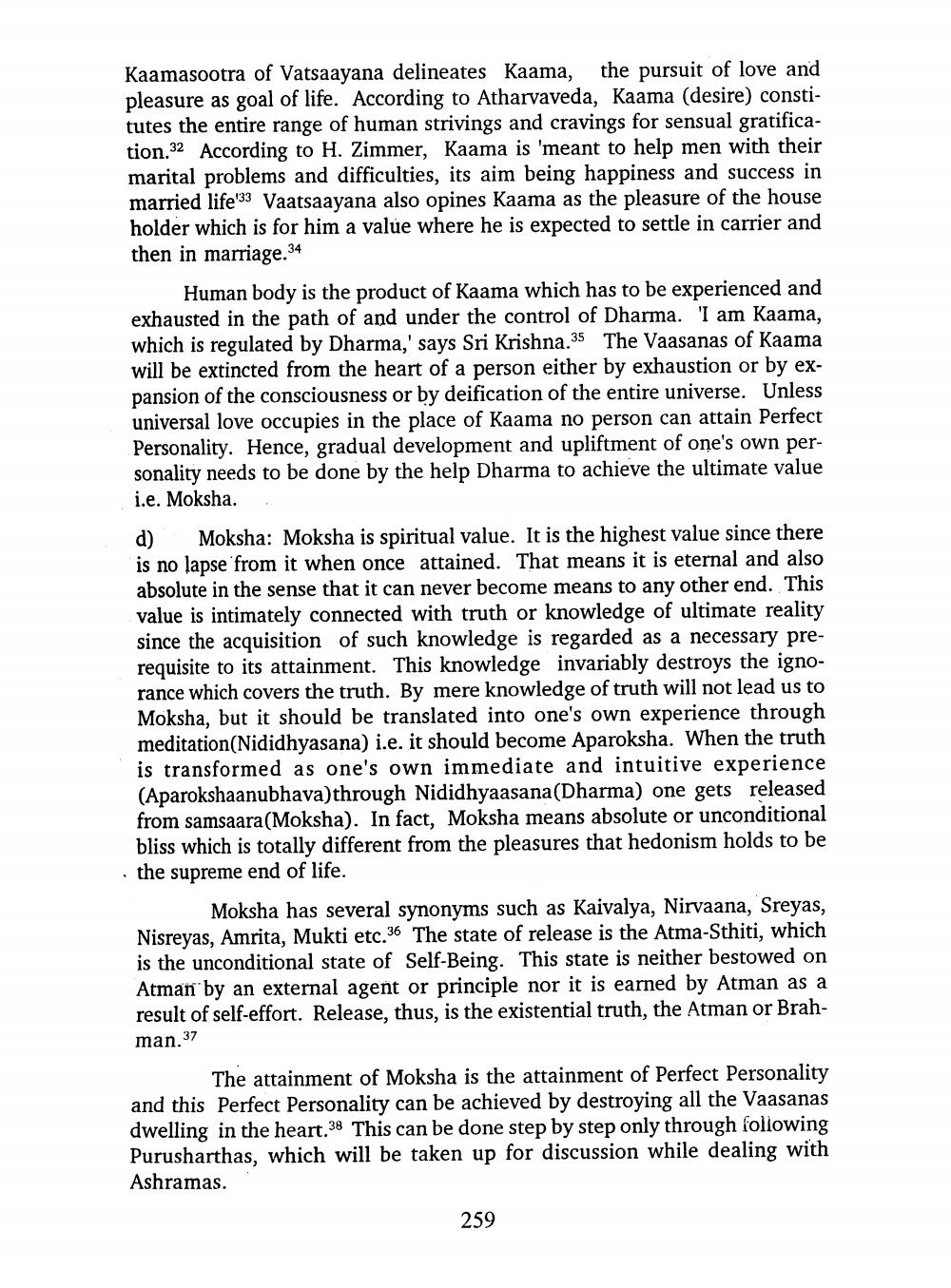________________
Kaamasootra of Vatsaayana delineates Kaama, the pursuit of love and pleasure as goal of life. According to Atharvaveda, Kaama (desire) constitutes the entire range of human strivings and cravings for sensual gratification.32 According to H. Zimmer, Kaama is 'meant to help men with their marital problems and difficulties, its aim being happiness and success in married life'33 Vaatsaayana also opines Kaama as the pleasure of the house holder which is for him a value where he is expected to settle in carrier and then in marriage.34
Human body is the product of Kaama which has to be experienced and exhausted in the path of and under the control of Dharma. 'I am Kaama, which is regulated by Dharma,' says Sri Krishna.35 The Vaasanas of Kaama will be extincted from the heart of a person either by exhaustion or by expansion of the consciousness or by deification of the entire universe. Unless universal love occupies in the place of Kaama no person can attain Perfect Personality. Hence, gradual development and upliftment of one's own personality needs to be done by the help Dharma to achieve the ultimate value i.e. Moksha.
d) Moksha: Moksha is spiritual value. It is the highest value since there is no lapse from it when once attained. That means it is eternal and also absolute in the sense that it can never become means to any other end. This value is intimately connected with truth or knowledge of ultimate reality since the acquisition of such knowledge is regarded as a necessary prerequisite to its attainment. This knowledge invariably destroys the ignorance which covers the truth. By mere knowledge of truth will not lead us to Moksha, but it should be translated into one's own experience through meditation(Nididhyasana) i.e. it should become Aparoksha. When the truth is transformed as one's own immediate and intuitive experience (Aparokshaanubhava)through Nididhyaasana(Dharma) one gets released from samsaara(Moksha). In fact, Moksha means absolute or unconditional
bliss which is totally different from the pleasures that hedonism holds to be · the supreme end of life.
Moksha has several synonyms such as Kaivalya, Nirvaana, Sreyas, Nisreyas, Amrita, Mukti etc.36 The state of release is the Atma-Sthiti, which is the unconditional state of Self-Being. This state is neither bestowed on Atman by an external agent or principle nor it is earned by Atman as a result of self-effort. Release, thus, is the existential truth, the Atman or Brahman.37
The attainment of Moksha is the attainment of Perfect Personality and this Perfect Personality can be achieved by destroying all the Vaasanas dwelling in the heart.38 This can be done step by step only through following Purusharthas, which will be taken up for discussion while dealing with Ashramas.
259




